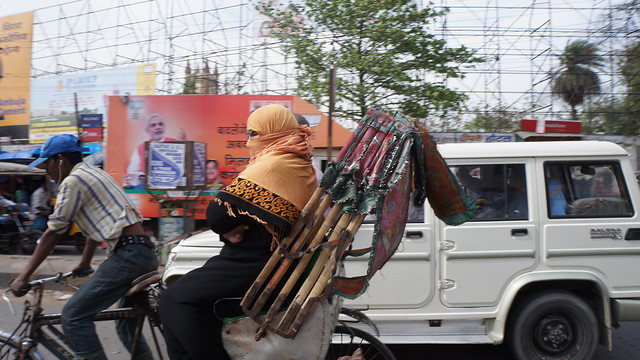By Soroor Ahmed, TwoCircles.net,
Whether it is a wave or no wave the Bharatiya Janata Party is likely to perform better in Uttar Pradesh than in Bihar, or maybe even in the home state of its prime ministerial candidate, Gujarat.
The reason is very simple. Unlike in Bihar or Gujarat there are five prominent parties in the fray in Uttar Pradesh––not to speak of small players. And any party which improves its performance slightly is likely to get the benefit of this big division in votes. Needless to say the division is in the anti-BJP votes, often called as secular votes.

Apart from the BJP, Samajwadi Party, Bahujan Samaj Party, Congress-Rashtriya Lok Dal and even Aam Admi Party are in the fray. AAP may not be a big force in all the 80 seats of the state (as in Delhi), yet it can play an important role in some west UP constituencies and in Varanasi, Amethi and Rae Bareli in the east.
As Samajwadi Party and BSP––and even to some extent RLD–– have specific social base they cannot be totally wiped out. The problem with the Congress was that it got votes from all sections of the society last time, when it performed extremely well. This time there is a big switch of this vote-bank towards the BJP.
The Muzaffarnagar riots of last year helped BJP in a big way to polarize the political atmosphere in the west UP. In the east the party increased its influence by fielding none else but Narendra Modi himself from Varanasi. The saffron party chief Rajnath Singh is contesting from Lucknow, while Smriti Irani from Amethi. So unlike in 2009 the party is very well prepared to take on the Congress.
In contrast the battle in Bihar is between the BJP-LJP-RLSP combine and RJD-Congress alliance. The ruling Janata Dal (United) has got squeezed between the two as it has no strong social base of its own. The support base on which it was banking––the Extreme Backward Castes and Mahadalits––are either too weak or have been affected by the BJP propaganda.
So if the upper castes, along with some backward castes, are voting overwhelmingly for the BJP, the Yadavs and Muslims have thrown their lot behind the Rashtriya Janata Dal and Congress.
Unlike in UP, where the anti-Modi voters are divided among four parties, in Bihar they may go directly to RJD-Congress alliance, and only in a couple of constituencies to Janata Dal (United), So there is less division of anti-BJP votes. This is the one reason why the saffron brigade is not as sure of its performance in Bihar as in UP, where its leader Amit Shah has been camping for months.
In Bihar the NDA did very well by winning 32 out of 40 seats in 2009 as the Janata Dal (United) and BJP fought together. Now that it has got split the BJP is not at all in position to win 32 seats. The Lok Janshakti Party and Rashtriya Lok Samata Party, with which it is contesting this time, is not going to compensate for the loss of the JD(U). So the NDA is not in the position to exceed its 2009 tally here.
The situation in Gujarat too is somewhat different from UP. Though Modi has won three successive Assembly elections the Congress has percentage-wise not performed as badly, especially in Lok Sabha polls. But this time there is fear that AAP votes in some constituencies may deal a blow to the prospect of the Congress.
Though the Congress party’s performance in Lok Sabha elections are often better than the Assembly polls this time the BJP propaganda of having a Gujarati as the prime minister is likely to hit the Congress. Otherwise, it would have been in better position to take on the BJP than in UP, where a plethora of parties have spoiled its chance.
In 2004 and 2009 the Congress won 12 and 11 seats out of total 26 in Gujarat. Thus the performance was much better than in UP.
The truth is that in UP the BJP is fully capitalizing on the division of votes. As it is sure of better performance here its propaganda machinery is quick to dub this situation as a big wave.

